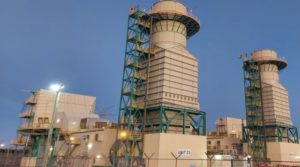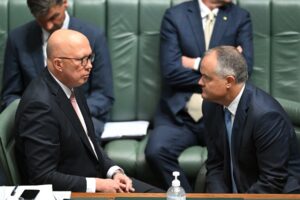The New South Wales state government has confirmed it will seek a massive 8,000MW of wind, solar and storage projects in the state’s north, the biggest call for renewables in the country, and setting itself up for what will be the biggest and most rapid transition from coal to renewables in the country, if not the world.
As foreshadowed by RenewEconomy on Thursday, state energy minister Matt Kean announced on Friday plans to create an 8,000MW renewable energy zone in the New England region, tapping into the enormous response to the state’s first renewable energy zone, which saw a phenomenal 27,000MW of wind, solar and storage projects for a region with the capacity of 3,000MW.
“The nine-fold level of interest in the Central-West Orana REZ was astounding, so it makes absolute sense to go even bigger with the New England REZ,” Kean said in the statement on Friday.
“The New England REZ will be able to power 3.5 million homes and, when coupled with Central-West Orana REZ, sets the State up to become the number one destination across Australia for renewable energy investment.”
NSW has been a bit of a laggard on renewable energy investment in recent years, although its current pipeline of projects means that it is catching up. But while it is the only state in the main National Electricity Market without a stated renewable energy target, it is headed for the biggest and quickest transition of them all, because the bulk of its ageing coal generators will retire in the next 10-15 years.
The Liddell plant is to close in early 2023, and this will be followed by the Vales Point and Eraring coal generators at the end of the decade, and then Bayswater (2036) and finally Mt Piper, in 2040 should it find enough coal to continue operations that long.
This coal capacity will have to be replaced by renewables and storage, which Kean says is clearly the cheapest and best option for the state, one that will give the state the opportunity to become an economic powerhouse as well as a renewable energy powerhouse.
But over the past year, only 16.2 per cent of the state’s electricity demand came from renewables, with a combined 7 per cent from rooftop and large scale solar and 6.3 per cent from wind energy. A further 7.6 per cent came from imports from Queensland and Victoria.
The Australian Energy Market Operator, in its 20-year blueprint known as the Integrated System Plan, highlights the huge transformation it expects to take place in NSW as the coal generators retire over coming decades.
Unlike South Australia and Tasmania, which are well advanced in their transitions, NSW is coming from a virtual standing start, even if the pace of large scale generation is starting to increase, and it is now the hottest market in the country in the uptake of rooftop solar, recording the strongest month of any state for installations in the month of June.
The AEMO ISP canvasses various scenarios from slow, through to central, and fast, and the step change that meets the Paris climate targets of 1.5°C.
 The pace of change in NSW will be extraordinary, as shown in this chart above and table below. According to AEMO, coal generation represented in black will disappear in the step change scenario in NSW, the country’s biggest electricity market, and will be replaced by solar, wind and storage.
The pace of change in NSW will be extraordinary, as shown in this chart above and table below. According to AEMO, coal generation represented in black will disappear in the step change scenario in NSW, the country’s biggest electricity market, and will be replaced by solar, wind and storage.
In other states, some coal generators continue on in Queensland and Victoria and W.A after 2040. That means NSW, from having the biggest coal fleet in the country, will join South Australia and Tasmania in having no coal fleet at all.
In AEMO’s central scenario, the New England REZ is not needed until around 2035/36, but in the step change scenerio, the first stages are needed within five years, and that seems to be the time table that NSW is adoptiong.
Indeed, AEMO identifies New England and the neighbouring north west region as the biggest renewable energy zone in the country. “New England will become a NSW powerhouse,” Kean says in the statement, adding that the government is tipping in $79 million to advance the process.
Kean made the announcement in company with state Nationals leader and deputy premier John Barilaro, mostly known in energy circles for his support of nuclear power.
“The New England REZ is expected to attract $12.7 billion in investment, support 2,000 construction jobs and 1,300 ongoing jobs – all while lowering energy prices and future- proofing the regions,” Barilaro said in the joint statement
“Regional NSW is the best place in Australia for renewable energy investment and the jobs it creates, and this funding allows us to unlock that potential.”
Also present was the state National Party member for Northern Tablelands, Adam Marshall, a renewables enthusiast who says the REZ represents an excellent opportunity for the region to create jobs, diversify its local economy and improve local roads and telecommunications infrastructure.
“Our region is fast becoming the renewables capital of NSW and we’re home to some of thebest renewable energy resources in the country, with flagship wind and solar projects atGlen Innes and Armidale living proof of this potential,” Marshall said.
That’s a welcome change from the views expressed by the federal member for New England, and former Nationals leader and deputy prime minister Barnaby Joyce, who has resumed his attacks on renewables in the past week, with a proposed wind farm near the village of Nundle the focus of his latest attacks.
Walcha Energy, which proposes a 4,000MW renewables hub within the New England renewable energy zone, also welcoming the decision by NSW to fast-track the creation of the new REZ.
Its projects include the 700MW Salisbury solar farm, the 700MW Ruby Hills wind farm and the 330kv Uralla Renewable Energy Hub, with options for battery and pumped hydro storage and a point of connection for multiple projects.
“We believe sharing the benefits of the development of renewable energy zones should be a priority for all renewable energy developers, and would urge the NSW Government to ensure community benefit sharing approaches become standard practice across the New England zone,” Simon Currie, a director of Energy Estate, one of Walcha’s proponents, said in a statement.











